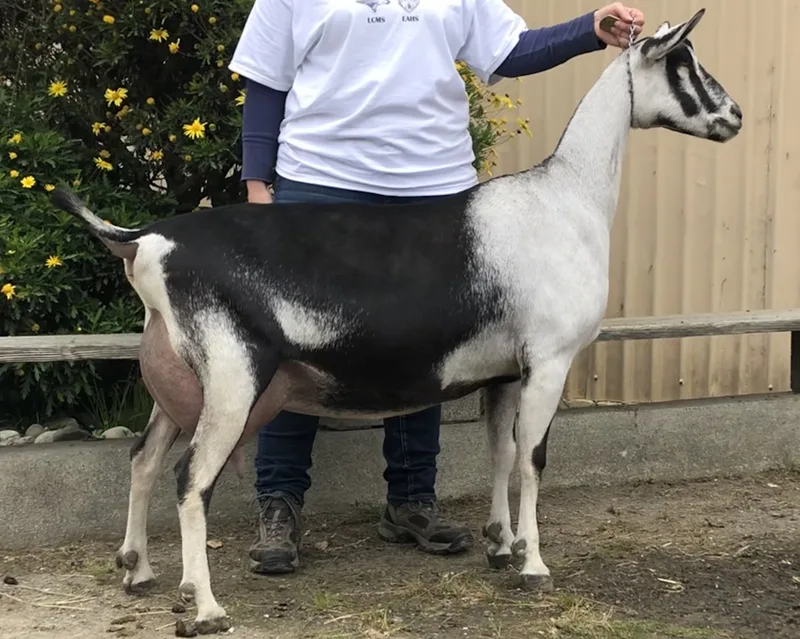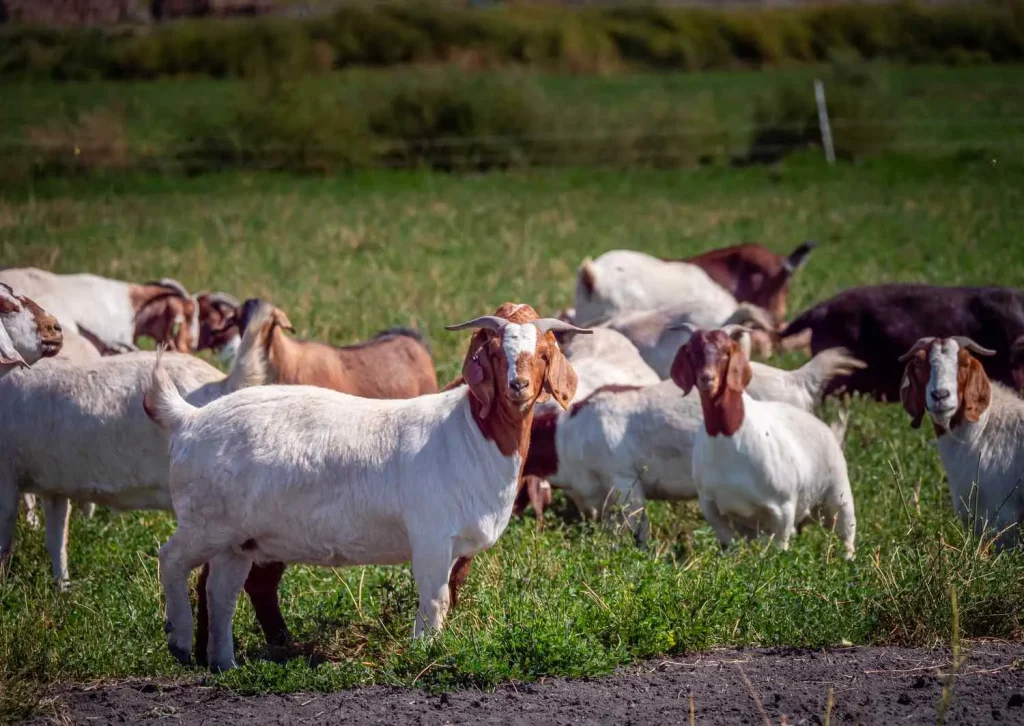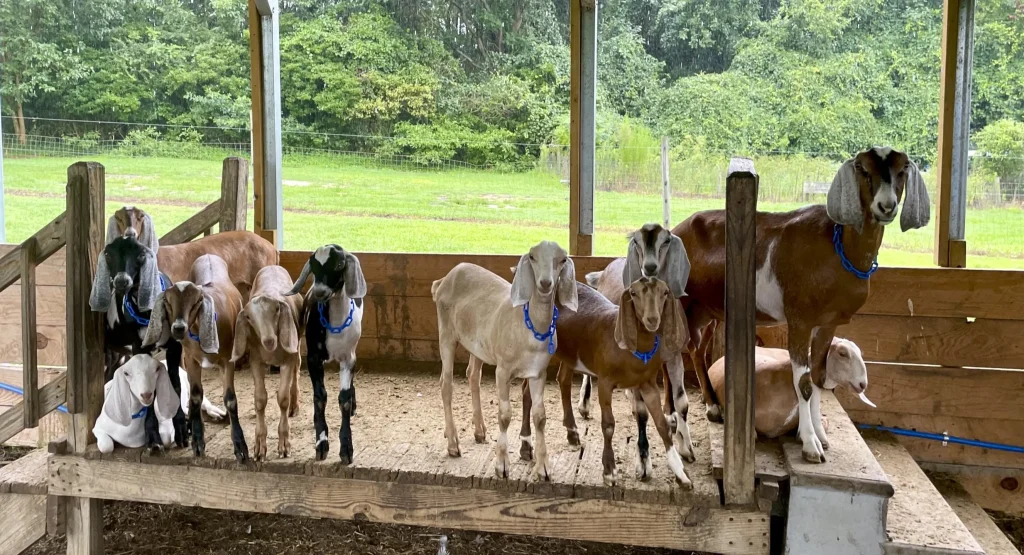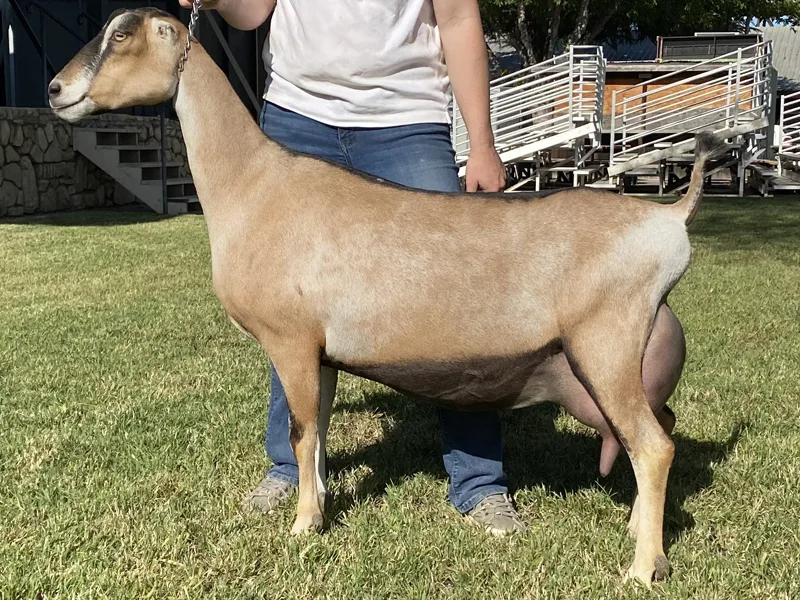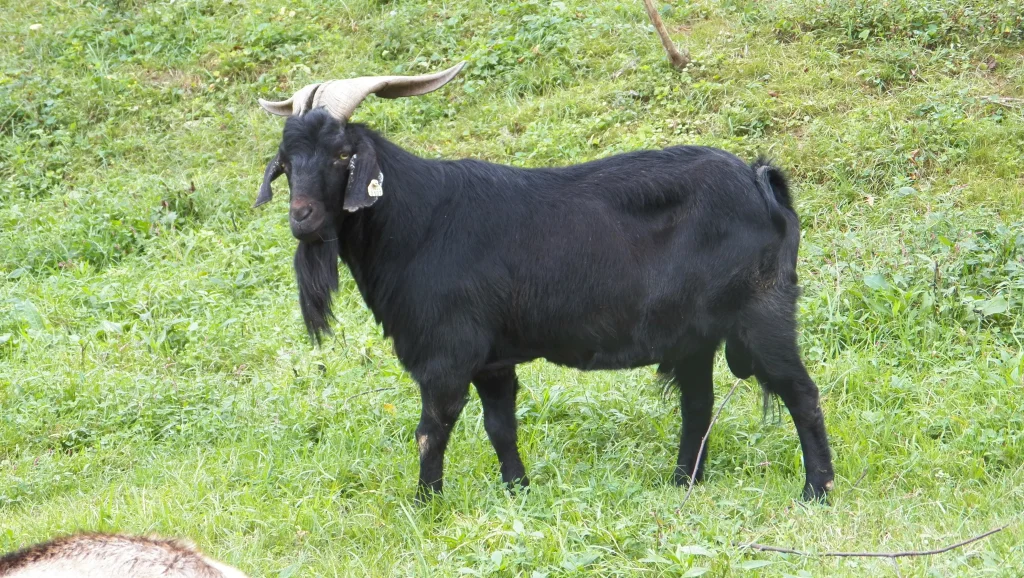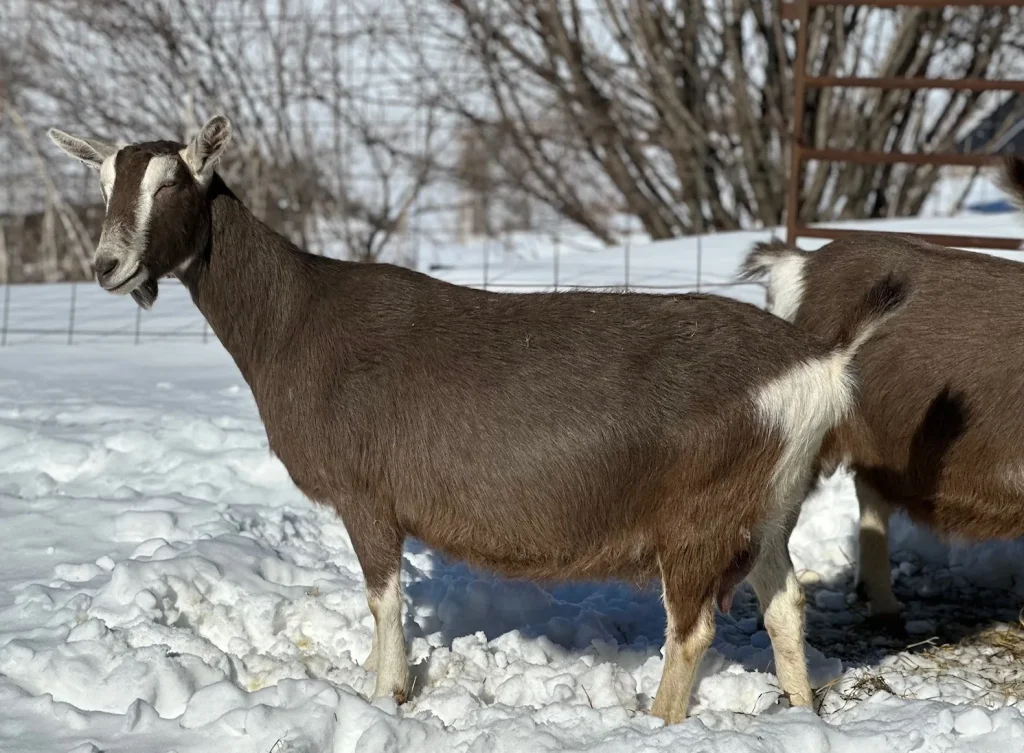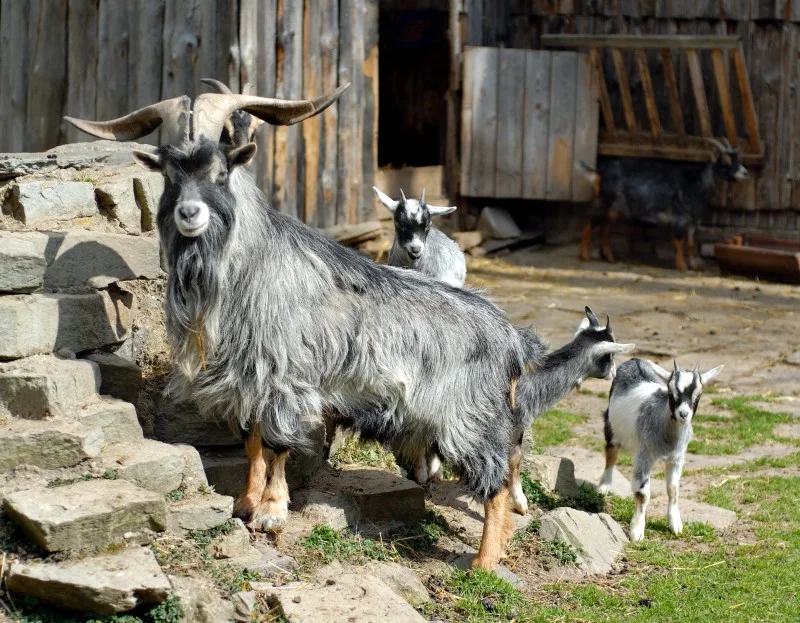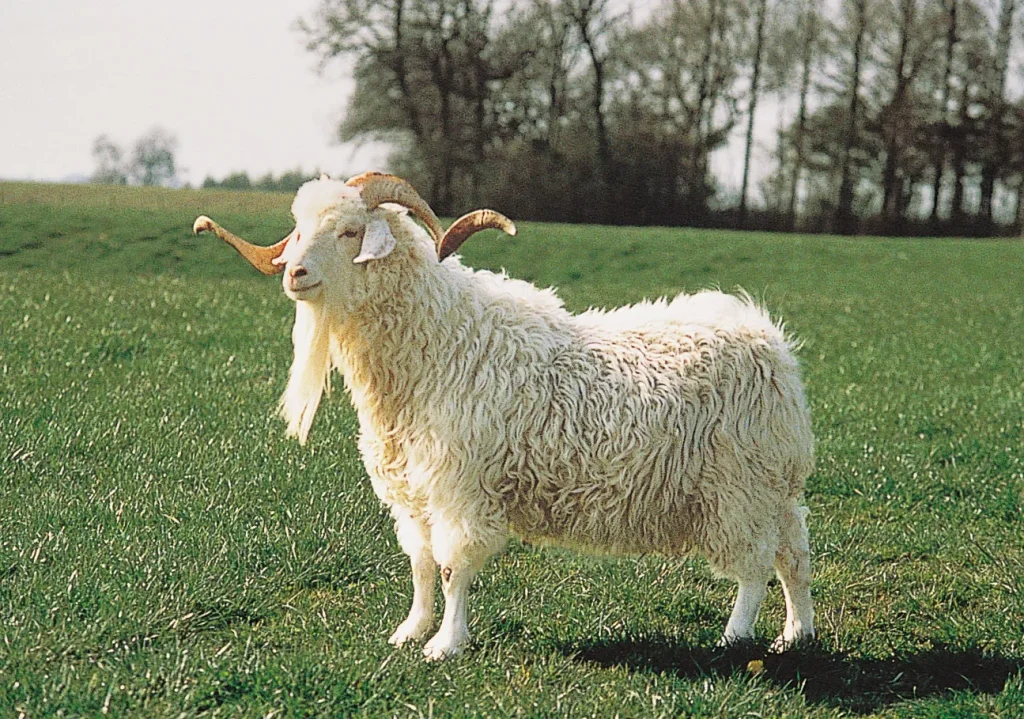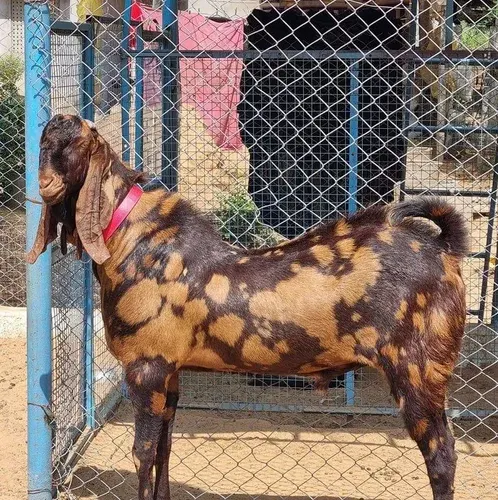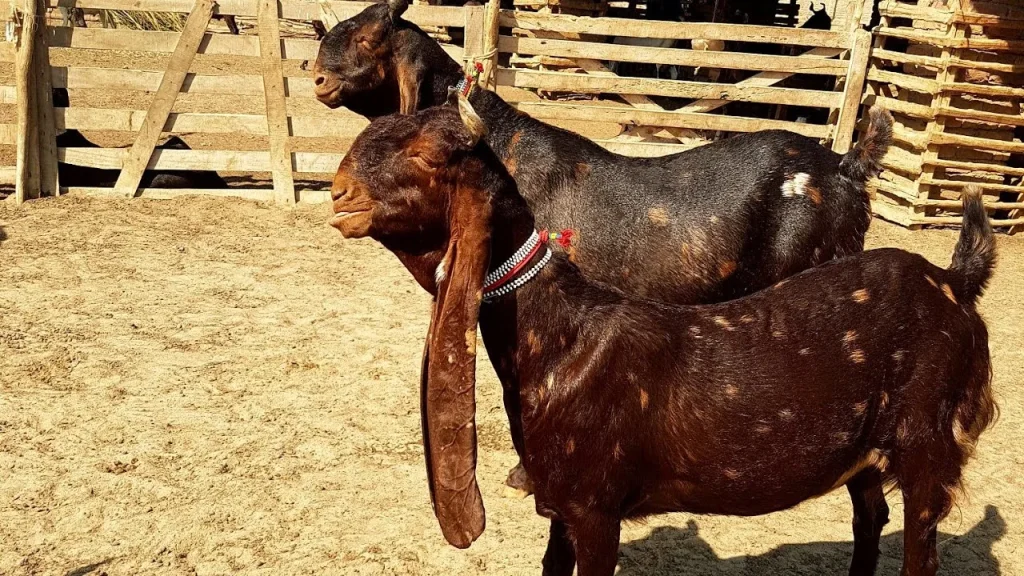🐐 Alpine Goat – The Hardy and High-Yield Dairy Champion
🌟 Introduction
The Alpine Goat is a favorite among dairy farmers and homesteaders for good reason. Known for its exceptional milk production, strong build, and adaptable nature, the Alpine Goat stands out as one of the top dairy goat breeds in the world. Whether you’re starting a small farm or expanding a large operation, Alpine goats offer both performance and personality.
📜 History and Origin
The Alpine Goat originated in the French Alps and was brought to the United States in the 1920s. Over the years, selective breeding created the **American Alpine**, a subtype well-adapted to a wide range of climates. With a rich heritage of resilience and productivity, the Alpine has earned a global reputation as a premier dairy breed.
🧬 Physical Appearance
Alpine Goats are medium to large-sized and have a sleek, elegant look. Their short-haired coat comes in a wide array of colors and patterns, including black, white, gray, fawn, and brown. No two Alpine goats look the same, which adds a unique charm to your herd.
They typically have upright ears, straight faces, and strong legs. Females) weigh around 135 pounds, while bucks (males) can reach 170 pounds or more. Their strong structure makes them excellent grazers and climbers.
🥛 Milk Production
When it comes to milk, Alpine Goats are true superstars. They can produce up to 1–2 gallons of milk per day during peak lactation. While their milk is lower in butterfat compared to Nubians (about 3.5%), it is excellent for drinking and making cheese or yogurt.
Their extended lactation periods and high productivity make them a reliable source of fresh milk nearly year-round, especially with proper nutrition and care.
🐐 Temperament and Behavior
Alpine Goats are energetic, alert, and independent. They are generally friendly and easy to handle, especially when socialized from a young age. Though slightly more assertive than breeds like Nubians, Alpines respond well to kind handling and consistent training.
Their inquisitive and intelligent nature means they need space to explore and mental stimulation to stay happy. They also enjoy companionship, so keeping them in pairs or groups is ideal.
🏡 Housing and Environment
These goats adapt well to various environments, from mountains to lowlands. A dry, well-ventilated shelter with protection from wind and rain is essential. Since they are agile and curious, fencing should be secure and at least 4 to 5 feet tall.
Provide ample outdoor space for grazing and roaming. Enriching their space with logs, rocks, and platforms can help prevent boredom and promote healthy activity.
🥗 Diet and Nutrition
A balanced diet is key to keeping Alpine Goats healthy and productive. They do well on quality hay, pasture, and a supplemental grain ration—especially during milking. Make sure they have access to clean water and a mineral block at all times.
To support high milk output, lactating does may need additional protein and calcium. Offering browse like shrubs and leaves mimics their natural diet and adds variety.
🛡️ Health and Care
Alpines are hardy animals, but like all goats, they require regular care. Key health practices include:
- Hoof trimming every 4–6 weeks
- Annual vaccinations
- Routine deworming and parasite control
- Clean and dry living quarters
Regular check-ups and attention to weight, coat condition, and behavior will help you catch and address issues early.
👨👩👧👦 Family-Friendly and Inclusive
Alpine Goats are suitable for all types of caretakers, from experienced farmers to first-time goat owners. They’re also great with children and can be part of inclusive farming programs, educational petting farms, and community-based projects.
Their active yet manageable nature makes them a perfect match for families who want to involve everyone in the care process.
📈 Popularity and Uses
Thanks to their impressive milk production, Alpine Goats are popular in both commercial dairies and home farms. They’re also valued for breeding programs, goat shows, and educational settings. Their sturdy nature and beautiful coats make them stand out wherever they go.
🌟 Fun Facts About Alpine Goats
- They can thrive in both hot and cold climates.
- Alpine Goats can live 12–15 years with good care.
- Their varied coat colors make every goat unique.
- They are excellent climbers and love elevated play structures.
- Alpines can be leash-trained with a little patience.
❓ Frequently Asked Questions
Q1: Are Alpine Goats good for beginners?
A: Yes! Their adaptability, hardiness, and high milk output make them excellent for beginners and experienced farmers alike.
Q2: How often do Alpine Goats need to be milked?
A: Twice daily is typical during peak lactation to maintain milk flow and prevent discomfort or mastitis.
Q3: Can they be raised with other animals?
A: Yes, they coexist well with other goats and even animals like sheep, cows, and chickens when properly introduced.
Q4: What is the average lifespan of an Alpine Goat?
A: With proper care, they typically live between 12 and 15 years.
Q5: Do Alpine Goats make good pets?
A: Absolutely! While they’re primarily dairy goats, their social and playful nature also makes them excellent companions.
✅ Conclusion
The Alpine Goat offers the perfect balance of productivity, adaptability, and charm. With their outstanding milk yield, strong health, and easygoing personality, they’re ideal for farms of all sizes. Whether you’re milking for business or caring for a friendly backyard herd, Alpine Goats deliver consistent results—and plenty of joy. Boer Goat
